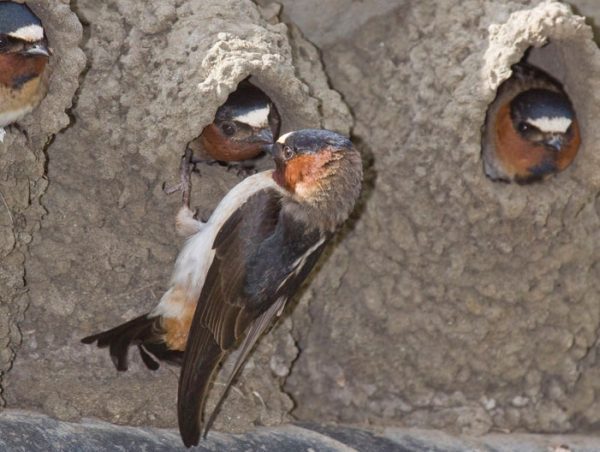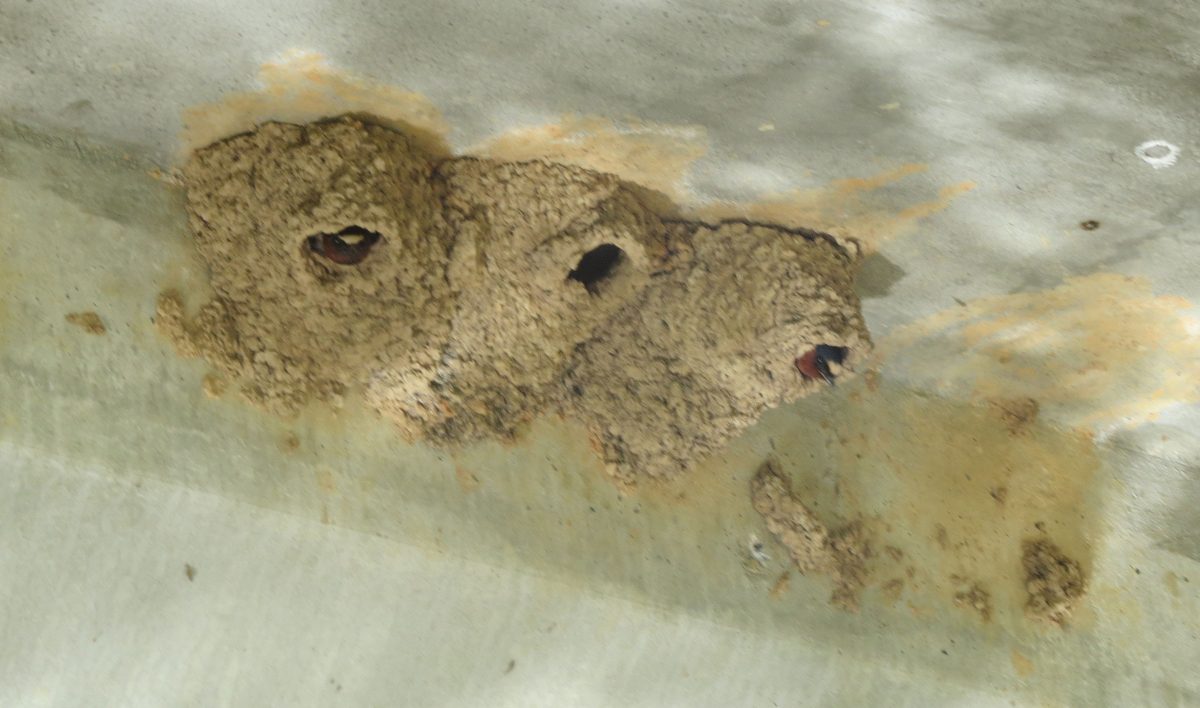Swallows that deserve our notice

A stop by the Eldorado Outpost one recent morning included a sighting of a barn swallow that had built a nest on a ledge of the building under the eave. Barn swallows (Hirundo rustica) are fairly common, and you’ve probably seen them on your own property. A couple of years ago, kayaking on Mountain Creek, I noticed a different species of swallow, a cliff swallow (Petrochelidon pyrrhonota). They had built their nests under the bridge.
Barn swallows are the most widespread species of swallow. They have tawny bellies, blue, shiny heads and with a brown forehead and throat, and a distinctive deeply forked tail that sets it apart from other swallows. They are found in Europe, Asia, Africa and the Americas. They build their nests on man-made structures, and their nests are jug or gourd-shaped cups made from mud pellets. Barn swallows live in areas with pastureland or meadows, often near water. They avoid dense forests, deserts and highly urban areas.
Cliff swallows also have shiny blue backs and crowns, with brown wings and tail. They have red faces and a bright white spot on the forehead. Their tails are squared off. They breed in North America and are migratory, wintering in western South America south to Argentina. Cliff swallows nest in colonies ranging from dozens to thousands of birds. Cliff swallows historically would have nested on cliff edges, but have adapted to use bridges, overpasses and culverts.
There are six subspecies of barn swallow and four are migratory. Individual birds often return to the same wintering ground each year and form a large roost. One such roost in Nigeria had an estimated 1.5 million birds. Male barn swallows return first to breeding grounds and advertise nesting sites to females with flight and song. The male’s breeding success is related to the length of his tail streamers, with longer streamers more attractive to females.

A row of cliff swallows’ nests. Photo: Crystal Cockman
For both species, food is most often caught in the air. If weather is bad they may forage on the ground. Both swallows feed largely on insects, including beetles, wasps, winged ants, grasshoppers, and spiders. They will only occasionally eat berries or seeds. Both species typically lay four to five eggs and both the male and the female incubate the eggs. Barn swallows sometimes have helper birds, young from the year before, that assist in feeding the new nestlings.
The next time you spot a swallow, take a second look to see if it is a barn swallow or the less common cliff swallow. Think about the distance these birds fly each year to find a suitable nesting site and raise their young. It’s remarkable how a small bird can go so far every year, and remarkable when you consider the effort swallows expend to build their nests and raise their young. They are a fascinating little species.